I once heard Danaher say that collar chokes are the most powerful chokes in all grappling martial arts. As you know, it is difficult to disagree with him, especially when, as a Judoka, I have an old Judo-inspired collar choke up my sleeve – the Canto choke. This strangle does not just utilize the collar to choke but also introduces the use of your legs, the strongest muscles in your body, to make sure you finish the job. Read on!
History of the Canto Choke
The name Canto choke comes from a Brazilian Judoka named Flavio Canto, who became notorious for using this choke.
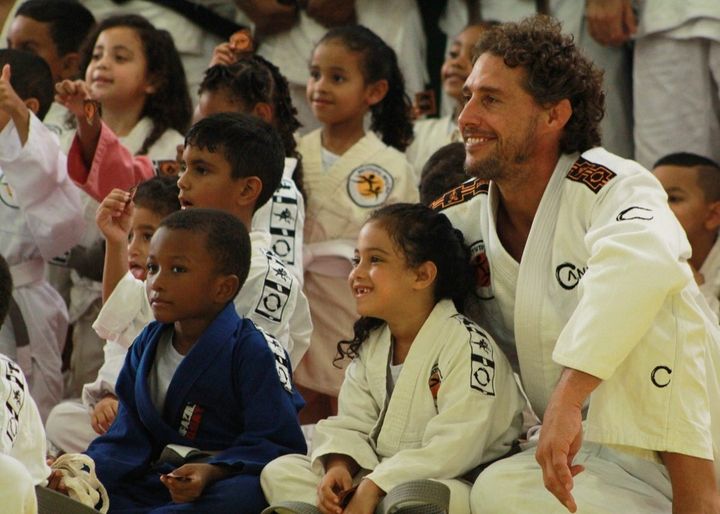
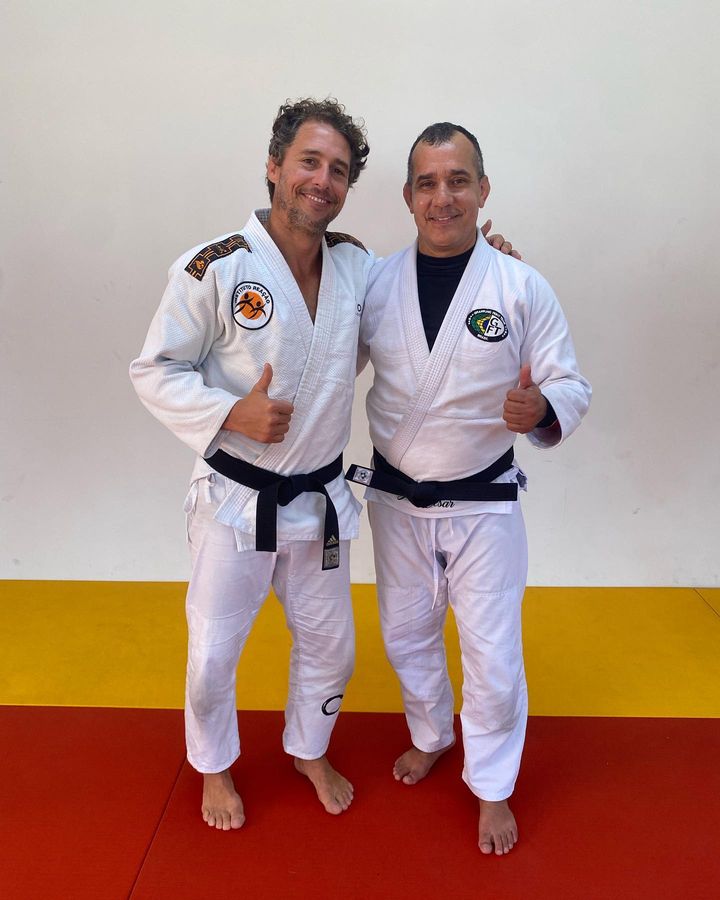
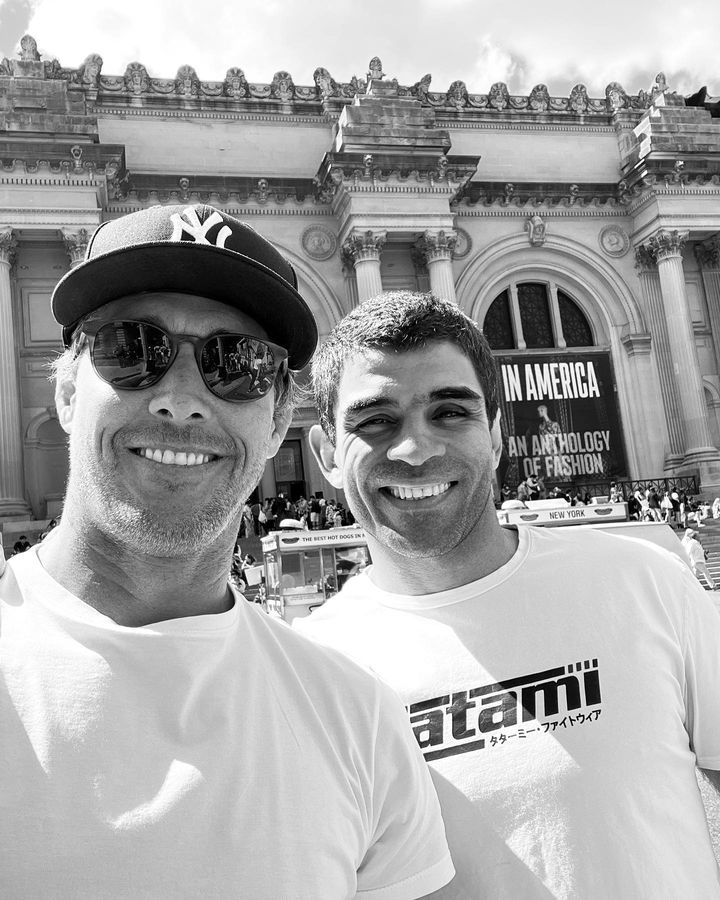
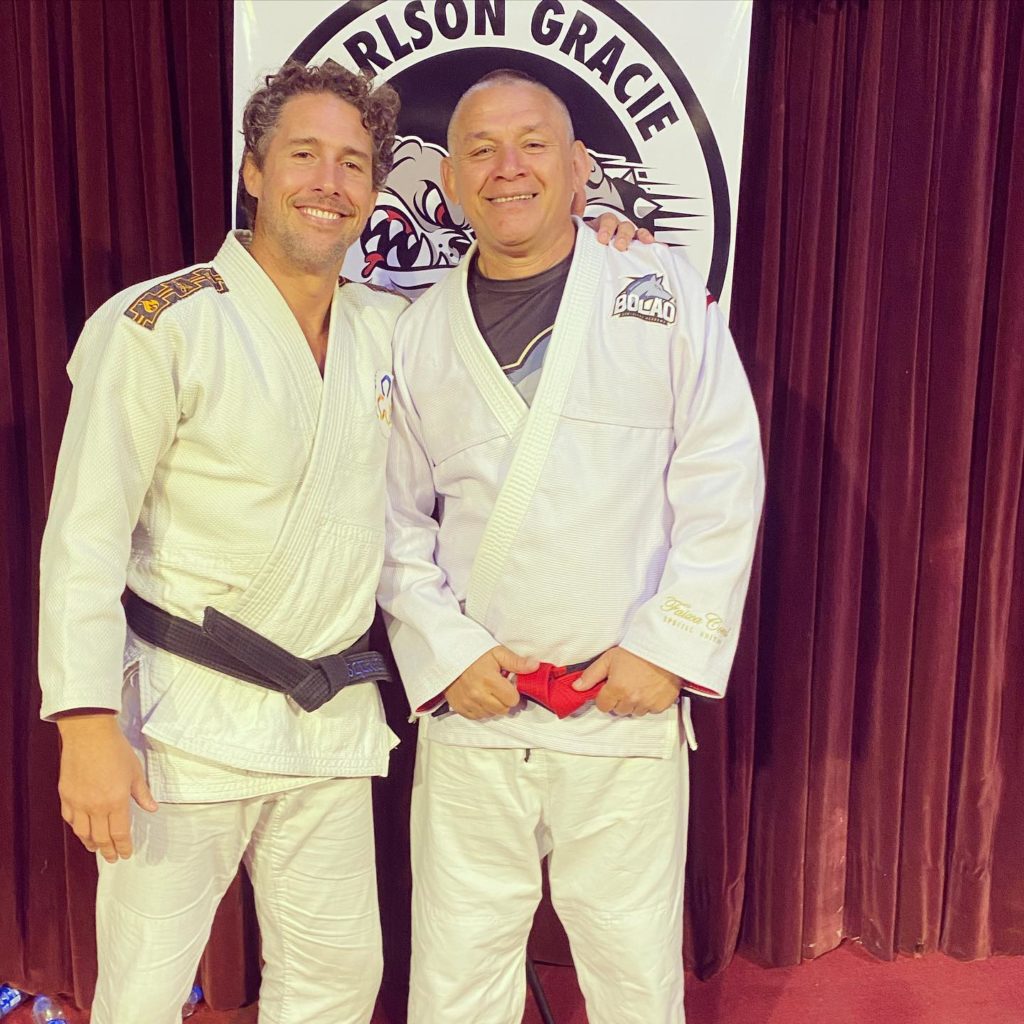
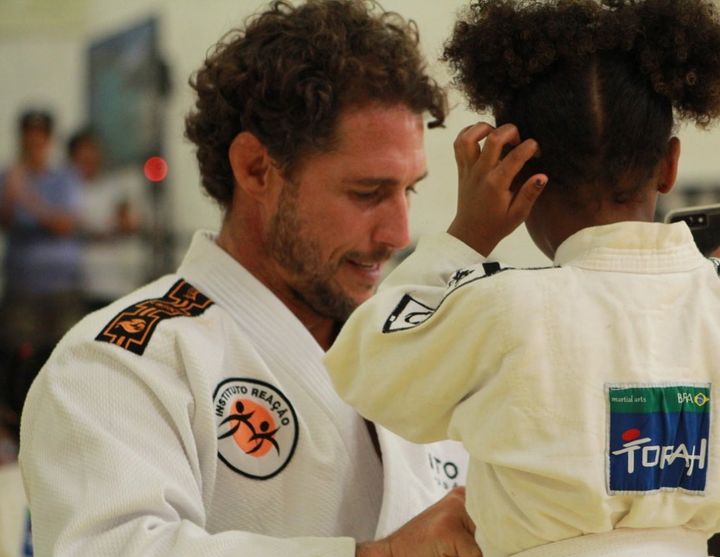
Images Credit: Instagram
However, before we look into Flavio’s variation, let’s talk about the history of the original choke. While most of the Judo nowadays is about throws, due to the requirements of Olympic rules, the area is extremely rich with submission holds of every variety.
In fact, BJJ collar chokes are all inspired by some of the original Judo strangles. One of those is the Ashi Jime.
Ashi means “leg” in Japanese (you already know that), and Jime means “strangle”. The literal translation here is leg strangle, which might seem pretty obvious. To be honest, several old-school Judo chokes all bear the same name.
While the Ashi Jime chokes were all efficient, it wasn’t until Flavio Canto’s fascination with one of them that such a configuration got popular. Namely, British-born Brazilian Canto decided to modify one of the old legs strangles, perfecting it so much that it brought him a bronze medal in the 2004 Olympics.
As a result of the modifications he did and the frequency at which he used the choke, it was named in his honor as the Canto choke, and it quickly got picked up by BJJ practitioners, who saw more than one way of setting it up.
How to Do the Canto Choke
The beauty of old-school Judo-inspired techniques, especially submissions, is their simplicity. The Canto choke is the perfect example of such beautiful and ultra-effective minimalism.
I will use the bottom half guard to present the Canto choke mechanics before covering a few interesting setups from different positions.
From a bottom half guard, the first order of business is to grab the opponent’s collar. In order to set up a Canto choke, and you’re looking for the same side grip with your top arm. There is no need to go deep, gripping at collarbone level will do the trick.
Your top leg should be in a knee shield variation, preferably a high knee shield with your knee touching the opponent’s shoulder. The bottom leg should be placed in a shallow half guard, meaning that your bottom knee is as close to your chest as possible while still remaining in half guard.
To initiate the choke, you grab the opponent’s far arm or leg with your free arm, aiming for an underhook. Once you have the underhook, swing the top leg free in a circular motion, aiming to place the hamstring behind the opponent’s head.
You want to try and place the sole of the foot on the mats, breaking the opponent’s posture completely. This motion makes the opponent base with their arm, which allows you to thread your foot underneath their far side armpit.
At this point, you’re all set for the Canto choke, all you need to do is to tilt toward the choking arm (the one holding the collar) and pull.
BJJ Canto Choke Setups and Variations
The Canto choke is a very powerful tool to use, mainly because, as with most Judo techniques, it appears to come out of nowhere and immediately puts the opponent under immense amounts of pressure.
The mechanics of the choke, polished and upgraded by Canto, a coral belt in Judo, and a 6th-degree black belt in BJJ, offer many different uses of the choke from various positions.
Open Guard
A setup favored by Canto himself, you can set the Canto choke up from any open guard as long as you are on your side relative to your opponent. The goal is to have a bottom leg that you use to stay on guard, controlling the distance while you are swinging the top leg to get into a choking position.
The grip, of course, remains the same and is the very first thing you need to do. Setting the choke up this way means you get a lot more depth on the leg that you place behind the opponent’s head. In fact, it often baits opponents to try and put their foot on the ground in an attempt to clear the leg.
This only exposes their leg for the hook, so instead of placing your foot in their armpit, you can hook underneath their hamstring, making the choke a lot more unpleasant and effective.
Side Control
You can also look for the Canto choke from top side control. It is how I learned it first, and I’ve had a lot of success with it in training and competition ever since.
From top side control, you start by gripping the collar near you. In most cases, opponents disregard this as nothing threatening.
To swing the leg behind the opponent’s head, they will need to be facing you, though. You can achieve this by grabbing the far side arm with your free arm and tilting them, or baiting them into trying to escape by turning it into you.
Once they expose the back of their head, you simply swing the near leg over the head And try to put your knee on the mat.
Over-Under Pass Counter
One of the best uses of the Canto choke in BJJ is to prevent people from passing your legs with the over-under pass.
Once again, the same side collar grip is ignored by many, which means you can get it with ease. As the opponent moves their hips to pass, your goal is to transfer the leg they have underhooked to their opposite shoulder. This is quite easy when the opponent is actually moving to pass as they set themselves up.
Once your leg is behind their head, you can finish with any variation you see fit.
No-Gi Canto Choke
There is a slick variation of the Canto choke that you can do in no-gi. It looks a lot like a necktie, but is nonetheless very effective.
In no-gi, you look for the leg placement and the far side armpit hook first, given that there is no gi to grip. In fact, you should aim to install a different type of hook, looking to hook the elbow rather than the armpit, and you’ll want to use your other leg to achieve it.
Once there, you can sneak an arm around the opponent’s neck (like going for a Darce choke) and look to grab your own shin. You’ll get a much tighter choke if you can clasp both arms over the shin.
Closing Thoughts
The Canto choke is one of those moves you can pick up on quite quickly and use with a high percentage of success against any opponent. The fact that it is available from both top and bottom makes it even more appealing.
Finally, it is the sneaky nature of the choke, along with the extreme power it packs, that ultimately makes it worth exploring. After all, it was developed, tried, and tested by a Judo Olympic medalist!

Ogi is a black belt that does Jiu Jitsu full time and is very passionate about anything grappling-related.
He is also the head coach of Enso Jiu Jitsu in Macedonia and an aspiring Globetrotter.
